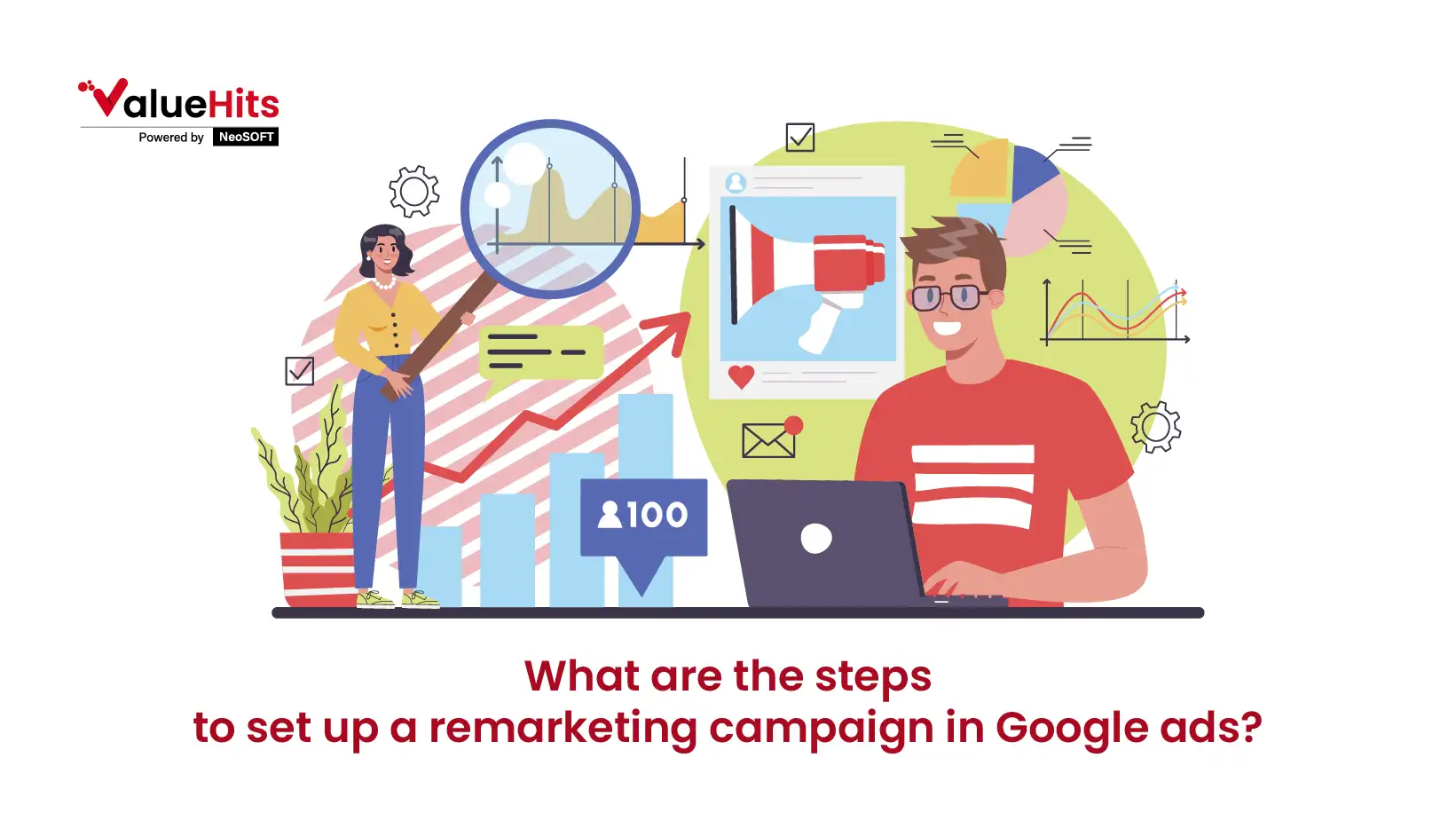KEYWORDS: ppc remarketing services google ads agency packages How to Launch Google Ads Remarketing Campaign How to Setup Remarketing Campaign in Goggle Ads Set Up a Remarketing Campaign in Google Ads Ultimate Guide to Google Ads Remarketing
What are the steps to set up a remarketing campaign in Google ads?
Have you ever looked through some interesting things at an online store, but then life got in the way, and you forgot to finish the purchase? It seems like you have entered the realm of "almost-customers." Remarketing with Google Advertising is a potent way to get back in touch with these website visitors and pique their curiosity about your company again.

To put it more simply, remarketing, sometimes retargeting, lets you show tailored advertisements to users who have already engaged with your mobile application or website.
In the digital realm, it functions as a kind reminder, reassuring people of your brand just when they need it to encourage a transaction.
Why does this matter? People's attention spans are shorter than ever in the modern digital age, and advertisements are all around us every day. Remarketing gives you the opportunity to maintain contact with that warm audience that has already expressed interest, greatly raising the likelihood that they will become paying customers.
Let's now explore the fascinating dynamic of creating your own remarketing campaign in Google ads. Here's a step-by-step guide to help you. Keep reading…
Step 1: Set Up the Google Ads Remarketing Tag
Consider the remarketing tag as a bit of code that quietly gathers visitor data while on your website. The tag establishes a distinct identity for each visitor to your website, making it possible for Google to identify them in the future.
To create this tag, go to the Audience Manager tool after logging into your Google Ads account. You can choose "Website visitors" as the source when creating a new audience. You will receive a custom tag snippet from Google, which you must include on each website page. You can partner with reputed PPC Services in India to help you with Google ads.
Fear not, non-tech-savvy folks! Google Tag Manager provides a user-friendly interface for managing all of your website tags, including the remarketing tag.
Step 2: Build an Audience for remarketing Google ads
Now is the opportunity to identify your target audience while the tag collects data. With the many possibilities that Google ads provides, you can target users who have visited particular sites (product categories, for example), browsed for a specific amount of time, or even abandoned their shopping carts.
Using the Audience Manager tool, you may make extremely focused lists.
Consider retargeting customers who abandoned their checkout with a discount coupon incentive or displaying exclusive discounts to those who browsed a specific product but did not add it to their cart.
Step 3: Create a Remarketing Campaign
This is when the magic happens! You can start a new campaign dedicated to remarketing in the Google Ads interface. This is where you set your objectives (like conversions, website traffic, etc.) and select the kind of Google ads remarketing campaign to run. Display campaigns are a common option for visual advertising on websites and applications that are part of the Google Display Network (GDN).
Important processes include deciding on your targeted alternatives, bidding technique, and budget.
You can limit the audience to whom your ads are shown or use demographics and interests to further narrow down the population you reach.
Step 4: Design and Upload Your Ads
Google advertising provides a range of alternatives for ad layouts, such as responsive display advertising, which automatically changes the size of ads to fit various ad locations.
Never forget that attention-grabbing images are essential. Make use of eye-catching visuals and persuasive writing to reach your target market.
Conclusion
If you follow these steps, you'll be on your way to starting an effective Google Ads retargeting campaign. Remember that remarketing greatly increases your chances of achieving conversions by enabling you to maintain contact with prospective consumers who have already expressed interest.
Don't be afraid to try new things and improve your campaigns along the way. Monitor your outcomes, evaluate what works and what doesn't, and keep refining your strategy. Remarketing can be the cornerstone of your digital marketing plan if you put in the effort and creativity to revive enthusiasm and turn website visitors into devoted patrons.
FAQ
1. What is remarketing, and why is it significant?
Remarketing, also known as retargeting, allows you to show ads to people who have already interacted with your website or app. It's a powerful tool for reminding potential customers about your brand and encouraging them to return and complete a desired action (like making a purchase).
2. How do I install the remarketing tag?
The remarketing tag is a piece of code that you place on your website. It tracks user behaviour and lists people who have visited your site. When you set up retargeting ads on Google, you can generate the tag within your Google Ads account and follow their instructions for installation. Google Tag Manager can also be used to simplify the tag implementation process.
3. What are the different types of remarketing audiences?
Google Ads retargeting campaign allows you to create audiences based on various criteria. Some common examples include website visitors (all visitors or those who visited specific pages), app users, and even customers who have purchased from you.
4. Can I target my remarketing campaign beyond just my website visitors?
Yes! You can leverage Google Display Network (GDN) to show ads on other websites your target audience frequents. You can also target specific demographics, interests, and online behaviours to refine your reach further.
5. What are some key considerations for designing remarketing ads?
Relevance: Create your ad content and visuals to resonate with the specific audience segment you're targeting (e.g., remind cart abandoners about the items left behind.
Clear Call to Action: Prompt users to take the desired action, whether it's visiting a specific product page, signing up for a newsletter, or making a purchase.
Visually Appealing: Use high-quality images and graphics that grab attention and complement your brand identity.
6. What are some advanced remarketing strategies?
-
Dynamic Remarketing: This remarketing strategy allows you to automatically display ads showcasing products or services that users previously viewed on your website.
- Customer List Targeting: Upload your existing customer email list to create a remarketing audience and reach them with personalized offers.
E-commerce SEO Strategy: 6 Proven Ways to Rank Higher
March 14, 2025
The success of E-commerce businesses is not a matter of chance but a re
A Step-by-Step Guide to Set Up Google Ads Conversion Tracking for Different Sources
March 7, 2025
Google Ads are a part of digital marketing; therefore, tracking the eff
Digital Marketing Agency Cost: How Much It Costs To Market Your Business in 2025
February 28, 2025
Marketing is no longer a luxury but a necessity for business organizati
